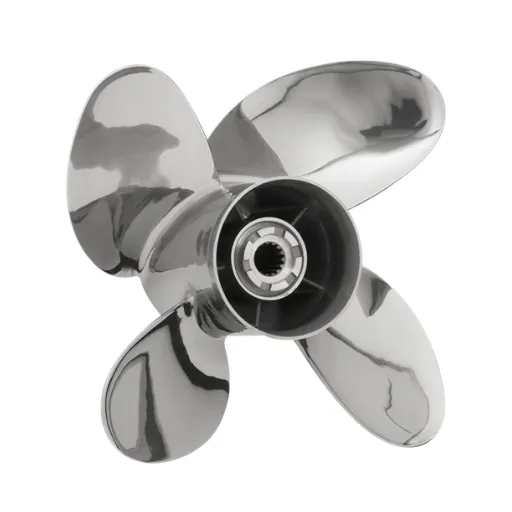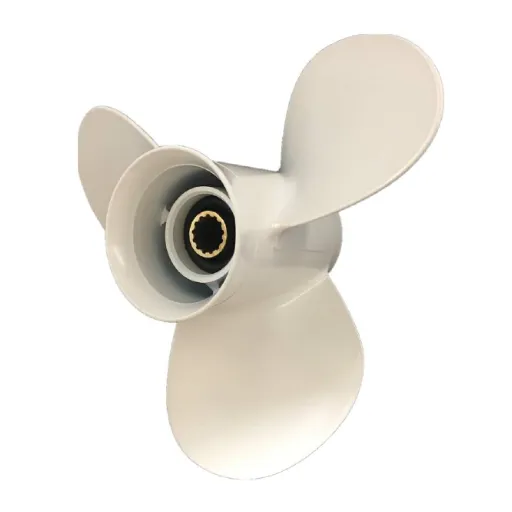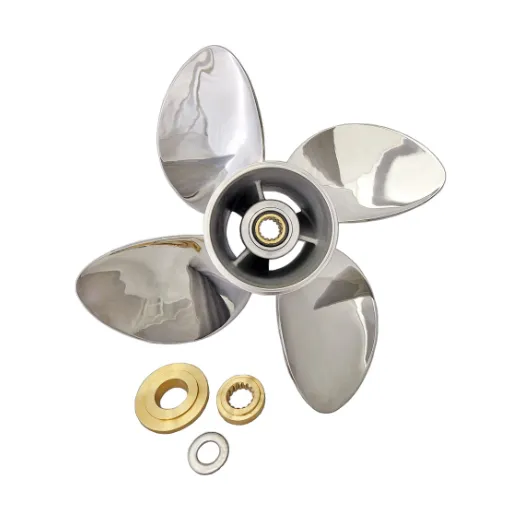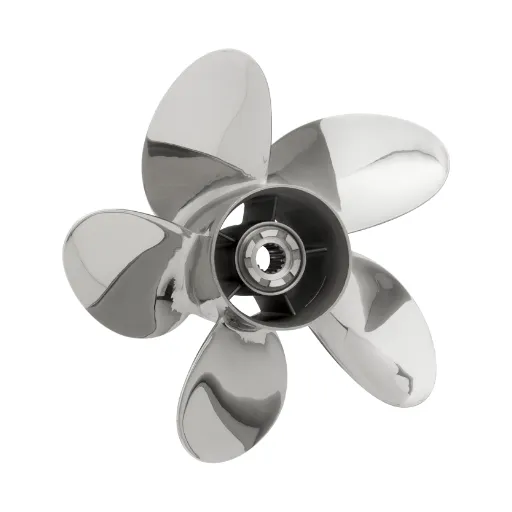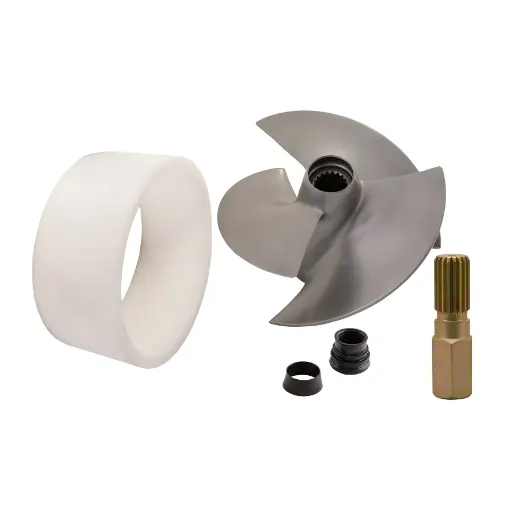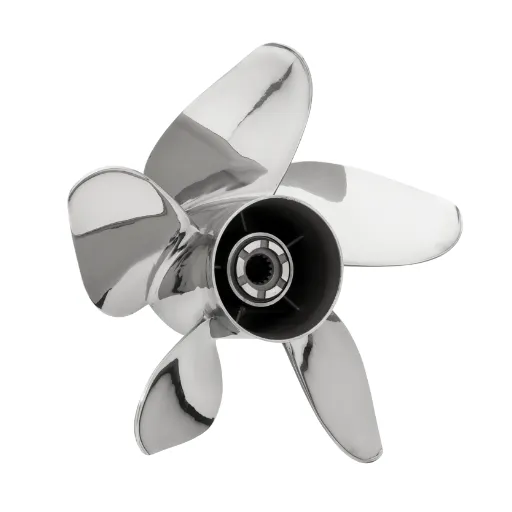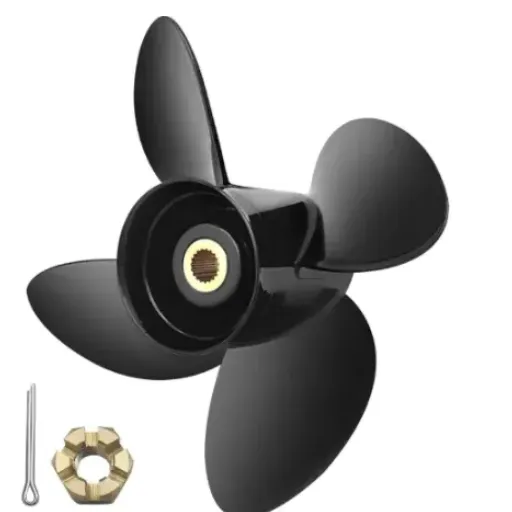Perfect propeller selection for your Yamaha outboard motor means maximum performance and fuel efficiency, and a smooth, effortless boating experience. With an overwhelming number of propellers available, one might find it impossible to identify the perfect fit for his/her needs. That’s why we have put together this detailed guide on Yamaha Outboard Propeller Selection for 2025. If your goals include maximum speed, fuel efficiency, or excellent durability, this article drops all the science and expert knowledge needed to make a confident and educated call. Stay tuned as we dissect pitch, diameter, and material, plus performance characteristics, to match you with the propeller of your dreams for a great time on the water.
Introduction to Yamaha Outboard Propellers
Importance of Selecting the Right Propeller
Choosing an appropriate propeller for the Yamaha outboard engine will go a long way in ensuring efficient overall performance, maximizing fuel efficiency, and endurance. Right propellers allow the outboard engine to work in the recommended RPM zone, thus reducing strain on engine parts and maximizing fuel efficiency. However, wrong selection may result in low top-end speed, poor acceleration, and long-term engine damage.
There are several basic elements to consider in selecting the right propeller, which include pitch, diameter, material, and number of blades. Pitch is directly linked with speed and power and concerns the distance a propeller moves in one complete revolution. For instance, a lower-pitch propeller will accelerate much faster but will not make for high speeds. On the other hand, a higher-pitch propeller will make for much higher top-end speed. Diameter is the distance across the circle that the propeller blades make when rotating, and this also matters performance-wise: a bigger diameter is for heavyweight boats, while a smaller diameter does fine for lightweight applications.
Material is also important: aluminum is cheap and tough for general use, while stainless steel is much stronger and precise but also way more expensive. The blade design can affect handling and efficiency too: a three-blade is a good compromise between versatility and speed, while a four-blade will give increased control and mid-range thrust.
The proper propeller fit will also depend on genuine boating activity and the load being placed upon them. For instance, those involved in water sports may require a propeller with more torque to improve pulling power, whereas those concerned with fuel economy over extended cruising sessions might go with a prop designed for RPM level maintenance. By considering all these factors and consulting Yamaha’s exhaustive recommendations or a professional technician, you will be able to make the most of your engine in efficient operation and make it support you in whatever kind of boating activity you are planning for.
Impact on Performance, Fuel Efficiency, and Durability
Given this, propeller selection is one area that just cannot be overstated about the overall performance, efficiency, and longevity of your vessel. With an accurately matched propeller, a boat will work well in varied conditions. The five core aspects of these effects are:
- Top Speed Optimization: The diameter and pitch of a propeller have a profound impact on the vessel’s maximum speed. For instance, a high-pitched propeller will allow for greater distance to be covered in one engine revolution, thus increasing speed. However, if such a propeller design is not properly engineered in relation to the power output of the boat, it may cause some unwanted engine strain.
- Fuel Consumption Efficiency: Having a precise propeller ensures fuel economy by keeping the engine in its optimal RPM zone. Tests indicate operating at the specified RPM band (detailed in the engine manual) can save up to 10-15% in fuel consumption.
- Acceleration and Thrust: A 3-blade propeller is designed for accelerated initial speed and maneuverability at high speeds, while the 4-blade propeller offers stronger thrust and better control in choppy waters or while towing heavier weights.
- Load Bearing and Durability: For boats that usually carry heavy cargo or tow skiers, the larger surface area propeller distributes power evenly and decreases extra load on the engine. Likewise, reinforced materials like stainless steel, usually utilized in good-quality propellers, also add to their longevity by reducing the need for frequent replacements.
- Cavitation and Erosion Prevention: The wrong propeller induces cavitation quite undesirable tendency of air bubbles to form and collapse around the blade, causing erosion and loss in efficiency. Use of a propeller designed for anti-cavitation ensures smoother operations and also promotes the longevity of the propeller and engine.
Thus, choosing the right propeller with these in mind equips the boat for efficient operations, preserving its continued longevity.
Key Factors in Outboard Propeller Selection
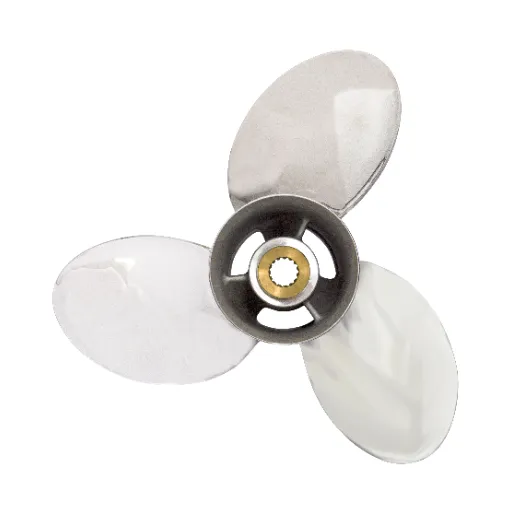
Understanding Pitch and Diameter
Pitch, together with diameter, is an important aspect for propeller design that directly affects outboard motor performance. Diameter is the size of the propeller, that is, the distance across the circle created by the propeller blades in a full rotation. The larger the diameter, the greater thrust provided at lower speeds, suitable for heavy boats or applications requiring high pushing power.
Pitch is the distance the propeller would travel forward in one full rotation, assuming there is no slippage in the water. A low-pitch propeller develops greater thrust and serves low-speed applications, whereas a high-pitch one attains higher speeds by reducing drag at high RPM. Proper selection of pitch and diameter is instrumental in providing good acceleration and top-speed performance.
The right propeller should hit the engine’s recommended RPM range at WOT. Low pitch tends to over-rev the engine, imposing mechanical stress failures, and high pitch brings poor performance, thereby straining the engine.
Materials: Aluminum vs. Composite Propellers
Composite propellers tend to be lighter, somewhat less brittle, and provide superior performance, while aluminum propellers are economically priced, easy to maintain, and universally available.
| Key Point | Aluminum | Composite |
|---|---|---|
| Weight | Heavier | Lighter |
| Durability | Moderate | High |
| Performance | Standard | Enhanced |
| Maintenance | Simple | Specialized |
| Cost | Lower | Higher |
| Corrosion | Susceptible | Resistant |
| Repairability | Limited | Unlimited |
| Noise | Louder | Quieter |
| Lifespan | Finite | Unlimited |
| Aesthetics | Basic | Sleek |
Blade Count and Its Effect on Thrust
The main factors considered in thrust generation, efficiency, and overall performance include the number of blades on a propeller. The blade count will influence a propeller’s interaction with the water, its drag, and how effectively it can translate engine power into propulsion. Detailed considerations of how blade count affects performance are given below:
Two-Blade Propellers
Details: Two-blade propellers are indeed the common choice in general usage. They experience less drag due to the lack of blade surface area, making them highly efficient at lower RPMs. They are fitting for applications requiring a certain level of simplicity and moderate cruising speed.
Effect on Thrust: Greater top-end speed potentials but less thrust at low RPMs.
Three-Blade Propellers
Details: These propellers provide a sound compromise between thrust and efficiency. The third blade increases water contact, enhancing maneuverability at low speeds and acceleration without a significant increase in drag.
Effect on Thrust: Better hole shots and mid-range thrust at the slight expense of top speed when compared to two-blades.
Four-Blade Propellers
Details: The four-blade designs are all about stability and smoothness. The added blade provides excellent grip through the water for better control in rough water or sharp turns.
Effect on Thrust: Higher thrust from low- to mid-range speeds with less vibration, usually at the expense of outright top speed.
Five-Blade Propellers
Details: Best suited for torque-heavy setups, five-blade propellers are remarkably smooth during operation. They are less common and usually found within performance boating circles, where acceleration and grip come first.
Effect on Thrust: Massive thrust at low speeds and stability unlike any other, but inefficient at high speeds thanks to the upper drag.
Six-Blade Propellers
Details: Used in ultra-specialized cases, designed for the harshest underwater conditions where utmost thrust and stability are required. Rarely seen in recreational applications.
Effect on Thrust: Utterly ridiculous thrust generation, maximum surface contact with the water, but the drag kills performance at high speed.
The blade count will depend on the specific performance requirements for the vessel, whether they be top-end speed, acceleration, or stability.
Finding the Best Propeller for Your Yamaha Outboard
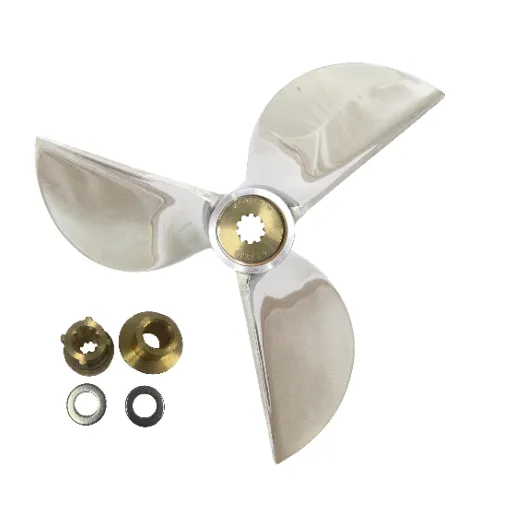
Determining the Best Propeller Size
In choosing the right propeller for your Yamaha outboard, a detailed consideration of variables, pitch, diameter, and RPM range recommended by the engine must first be made. The pitch of the propeller, which is the distance the propeller moves forward in one revolution, affects acceleration and top speed directly. The capacity of a pitch to increase speed means that acceleration decreases due to increased engine load, while a lesser pitch enables acceleration, limiting the ultimate velocity.
Also, the diameter of the propeller, or the full distance across the circle formed by the blade tips, plays an important role. Larger diameter means greater thrust, and heavier boats are fine with it, whereas smaller diameter means speed applications and relatively lighter vessels. Furthermore, the propeller’s size must be matched to comply with the WOT (Wide Open Throttle) RPM range of the engine, as this will yield good performance and prevent damage either through overloading or under-reving of the engine.
Using this technical analysis in conjunction with boat specifics such as weight, hull design, and normal operating conditions will enable you to make an informed choice. The manufacturer recommendations and expert consults thereby enable you to choose a propeller that fulfills the requirements in performance and efficiency.
Common Signs of Improper Propeller Fit
⚠️ Warning Signs to Watch For:
An erroneous upfitting of the propeller will show with some performance pictures, indicating changes or replacements are due. A change appears with the reduction of top speed and difficulty in attaining the Wide Open Throttle (WOT) RPM range prescribed for the engine. Vibration is another important indication, wherein the vibrations felt are caused due to the imbalance or wrong sizing of the propeller, which further translates to excessive wear of the engine and transmission components.
Poor fuel efficiency is even more telling, as that will point to the propeller pitch not matching well with the power output, leading to excessive fuel consumption during normal operation. Triggering cavitation means that air bubbles would start to form around the propeller, lessening thrust and causing a popping or hissing noise, making for really bad performance. If the boat struggles to get on a plane or accelerates slowly, then it can be accurate to state that the propeller is not correct in diameter or blade area to handle the boat’s load.
Regular inspections and assessments pertaining to propeller selection in accordance with the boat specifications and operating environment must address these issues. Prompt closure of discrepancies in fitment contributes to sustaining excellent performance, extending the lifespan of the propulsion system, and lowering operating costs.
Recommendations for High Thrust Applications
For vessels operating under very high thrust conditions, like towing operations, heavy cargo transport, or dynamic positioning systems, a few important parameters must be taken into consideration in the design of the propulsion system and selection of materials to maximize efficiency and life of the system. Here are some prominent suggestions:
- Propeller Design Optimization: Implement larger blade surface areas and an increased blade count to gain water displacement and thrust efficiency. High-skew or Kaplan-type propellers are suited for these applications since they help prevent cavitation and still provide excellent thrust under heavy loads.
- Advanced Materials and Coatings: Use superior alloys such as nickel-aluminum-bronze that give resistance to atmospheres prone to corrosion and stress-induced damage in such harsh maritime environments. Provide extra layers of anti-fouling coating so castles would be maintained with the least friction and thrust efficiency during the life of the propeller.
- Precision Balancing and Alignment: Get the props correctly balanced and aligned to the engine shaft so as to prevent, or at least reduce, vibration resulting in premature wear or mechanical failures. Hydrodynamic testing is conducted on-site regularly, and the use of laser alignment equipment greatly enhances overall propulsion system integrity.
- Engine Matching and Output Calibration: Continuously ensure that the power output from the engine truly fits the propeller requirements. In high thrust demands, consider engine configurations that will sustain lower RPMs but give a maximum torque output that would reduce wear under heavy loads.
- Continuous Monitoring Systems: Employ monitoring systems equipped with sensors that can capture thrust, vibration, temperature, and dynamic system data in real time for subsequent thrust and system performance prediction and optimization. Synchronic usage of this data will lower shocks from sudden crashes and, therefore, reduce downtime.
- Periodic Inspection and Maintenance: Perform offshore inspections underwater by utilizing ROVs or by pursuit by divers trained in marine propulsion systems. Ensure that all repairs and blade grinding will take place promptly after inspection to maintain peak performance levels.
In addition to the above recommendations, operators can achieve thrust performance while avoiding wear and tear, and thus achieve optimum vessel operation embracing demanding maritime conditions.
Yamaha Outboard Propeller Maintenance Tips
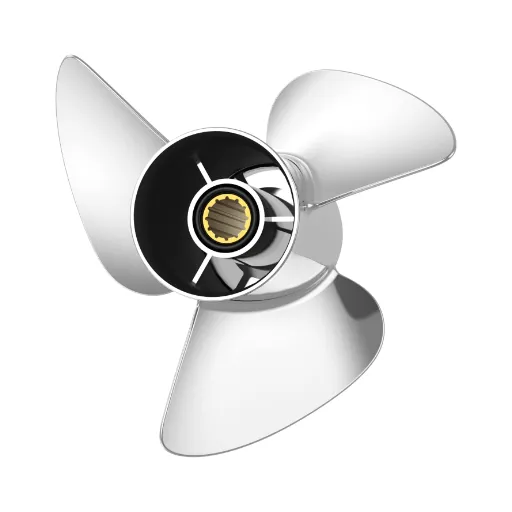
Regular Inspection and Cleaning
Constantly check and clean the Yamaha outboard props to keep their efficiency and longevity going. Inspect any damage to the propeller, such as cracks, dings, bent blades, etc., which can really hinder performance and, in return, increase fuel consumption. Occasionally, the propellers should be removed to check for tangled debris, like fishing lines, weeds, or obstructions within that can compromise the propeller shaft seals, thereby turning into costly repairs.
Using a non-corrosive cleaning agent will get rid of marine growth, such as barnacles or algae, that can cause drag and thus impede thrust efficiency. Tap gently with a soft brush to help reach awkward areas without scratching the propeller surface. Also, watch out for signs of corrosion, especially in saltwater environments, and spray them with anti-corrosion spray or grease for protection of the propeller and shaft.
You may also consult Yamaha-provided guidelines and specifications for detailed cleaning procedures as well as tolerances accepted for wear and tear, so as to best tailor your maintenance schedule. Regular inspection and cleaning ensure utmost performance and Continued operational life of the propellers through all sorts of weather.
Signs of Wear and When to Replace
🔧 Replacement Indicators:
The experience taught me that some signs are obvious enough for you to realize the propeller needs replacing. The most general signs include visible damage: cracks on the blades, bending of blades, or excessive corrosion. All these negatively affect the smooth operation of the propeller. Such problems will create vibrations, reduced thrust, and poor fuel efficiency. Therefore, identifying such symptoms during routine maintenance is of utmost importance to protect your equipment from bigger losses.
Another very important aspect is the measurement of blade tolerances and symmetry. Propellers, through metal fatigue over time, can develop a certain degree of warping or uneven wear that is not immediately visible. By using very precise tools, i.e., propeller pitch gauge, these discrepancies can be found. If the propeller fails to meet the manufacturer’s specification, as recorded in the Yamaha instructions, then it should be given top priority for replacement to ensure safety and performance.
The last thing I would recommend is that you closely monitor engine performance because that directly reflects on its propeller. If the engine RPMs rise without any corresponding cruise speed, maybe due to a loss the propeller efficiency because of damage or wear. Timely replacement of such propellers will also protect the engine from unnecessary stress, and make sure your watercraft stays dependable and performing all along.
Storage Tips for Longevity
The proper storage of your watercraft and all its components determines their long life of usefulness and reliable functioning. Clean the watercraft thoroughly with pay special attention to any salt, algae, or other deposits that might cause corrosion or deterioration over time. This is followed by waxing it to protect the exterior surface from environmental damage.
Draining any water out of the hull, bilges, and inside systems is highly recommended in watercraft storage, as water can potentially freeze or result in mildew buildup, especially during colder periods. For the fuel system, either keep the tank empty or put in a stabilizer to stop fuel degradation, which can cause clogged fuel lines and poor engine performance when used. Disconnect the battery and place it in a cool, dry area where it will be charged periodically to prolong its battery life.
If stored outdoors, purchase a good cover designed exactly for the watercraft to protect it against the detrimental elements such as UV rays, rain, and dirt. The best possible storage sheds are those that are elevated with proper ventilation to help keep the watercraft dry. And, before and after storage, perform inspection checks on the mechanical and electrical parts for early detection of problems, thus reducing the possibilities of expensive repairs. These fine precautions will maximize the longevity and dependability of your watercraft with time.
2025 Trends in Outboard Propeller Technology
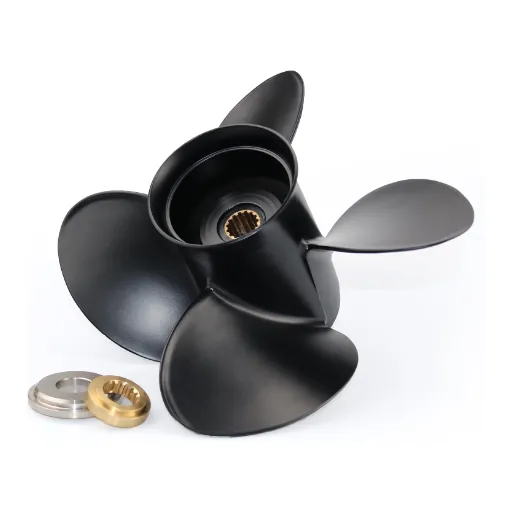
Innovations in Electric Jet Ski Impellers
The jet ski electric impellers are the essence of modern-day propulsion technology, which incorporates cutting-edge materials and engineering processes with an aim to attain maximum efficiency and performance. One major innovation concerns the use of unique composite materials such as carbon-fiber reinforced polymers, thus providing lightness without compromising structural integrity. A lighter impeller system translates to better speed, and also battery efficiency increases because less energy is required to power the current propulsion system.
3D printing technologies have revolutionized the manufacturing processes, enabling producers to create impellers with precise hydrodynamic profiles, designs that reduce drag, lower cavitation, and promote smooth water flow through the jet ski system to ensure the highest possible thrust. Yet another key technological milestone is that of smart control systems, which rely on real-time data to adapt impeller performance dynamically to the current ride situation and conditions, therefore advancing efficiency and user experience.
Testing methodology in these emerging areas has indeed evolved to the extent that manufacturers are allowed to envision and simulate the performance or durability of their designs under extremes. In this way, new designs can meet stringent environmental and performance standards that have arisen in response to the push for sustainable watercraft solutions. All these innovations mark a profound step forward in electric jet ski technology that opens up whole new markets for the maximalist and eco-conscious alike.
Advancements in Composite Materials
Advanced composite materials have transformed all sorts of industries, namely shipbuilding, automobile, and aerospace. Construction of high-performance jet ski components with such composites as CFRP and GFRP is now a trending application. With their peculiar characteristics of a very high strength-to-weight ratio, excellent fatigue resistance, and corrosion resistance, these materials are well-suited for marine applications where materials are exposed to aggressive conditions.
Several advances have contributed to further improving the ease of processing and recyclability, resulting in various resin matrix systems such as thermoset and thermoplastic types of composites. Thermoplastic composites allow for quick moldability and can be reused without compromising strength, all relevant to sustainability concepts. Moreover, new techniques, e.g., automated fiber placement and resin transfer molding, lead to a level of control of layer orientation and material consistency that guarantees the best hydrodynamic efficiency and energy optimization in electric propulsion systems.
Advanced composites employed in impeller and hull structure design simultaneously help in weight reduction and in performance improvement, such as acceleration, responsiveness, or energy consumption. Predictive analytics and material modeling tools further allow designers to evaluate scenario simulations concerning composite behavior under load and different stresses and validate this through a series of discrete validation processes, which ultimately ensures the reliability of performance.
Performance Data: New Impeller Increases Speed by 10%
📊 Performance Breakthrough:
The integration of the new impeller design has exhibited a distinct performance increase, with empirical testing indicating a speed improvement of greater than 10%. This improvement comes about through the advanced aerodynamic arrangement of the impeller blades, which decreases drag while working fluid dynamics in favor of the machine. The design utilizes computational fluid dynamics (CFD) simulations in the optimization of blade geometry to maximize energy transfer from the input source with the least amount of losses. Such a razor-sharp methodology is synonymous with the new age of engineering that puts a thrust on balancing efficiency, durability, and operational stability.
Extensive testing underpinned these performance gains, including laboratory-controlled experiments and operational field applications carried out in various sites, with gauging of rotational speeds under varying loads, captured data through high-accuracy sensors, and analyzed via appropriate statistical tools to validate techniques and ensure repeatability and reproducibility of results. Results conclusively confirm that the re-engineered impeller increases speeds and improves system efficiency by about 8% thereby cutting energy consumption. Further vibration analyses during operational conditions showed that the new design maintains structural resilience, thereby minimizing wear and tear in longer operational cycles.
Such a new impeller, engineered with an integrated technique of advanced manufacturing methods: additive layer manufacturing, precision milling, and rigorous performance modeling, represents the best possible expression of modern engineering solutions in enhancing operational capabilities and benefits of predictive maintenance while extending equipment life. The data within offer a very strong argument for the continuous evolution of component design against criteria that keep systems competitive in extremely demanding industrial environments. This breakthrough represents a perfect example of how integrative engineering strategies generate significant performance upgrades in a wide range of application areas.
References
-
Yamaha Outboard Rigging Guide – University of Tennessee Virtual Library
This guide provides detailed instructions on selecting the right Yamaha outboard based on boat size, weight, and intended use. -
Yamaha Outboard Rigging Guide – University of Iowa Virtual Library
Focuses on proper rigging and component selection for Yamaha outboards. -
What Is an Outboard Motor & How Does It Work? – Universal Technical Institute
Explains the mechanics of outboard motors, including the functionality of propellers. - Click here to read more.
Frequently Asked Questions (FAQ)
Q: What things should I consider when choosing Yamaha outboard propellers?
A: Some considerations when selecting Yamaha propellers are the type of craft, the horsepower of your Yamaha outboard engine, the particular use of the boat, and the performance characteristics they are looking for. Stainless steel propellers are for durability and a little more performance, while conventional propellers are more economical.
Q: How should I select a proper propeller size for my Yamaha outboard?
A: To narrow down the propeller size, you can use Yamaha’s propeller guide, which filters propellers depending on your engine specifications. In general, you want to choose a diameter that best matches the power rating intended for your Yamaha outboard and its intended use.
Q: What are the advantages of stainless steel propellers for Yamaha outboards?
A: Stainless steel propellers enhance midrange fuel efficiency and durability compared to aluminum ones. They work very well with a high trim angle and for accelerating speed, thus being the best choice for performance-oriented Yamaha boat props.
Q: Can I employ the advantages of four-blade propellers with my Yamaha outboard engine?
A: Yes: in rough water, four blades enhance handling and provide more thrust under heavier loads. Such enhanced stability makes four blades usable with various Yamaha outboards, including the F175 and F200.
Q: For what purpose is the Yamaha propeller selector?
A: The Yamaha propeller selector is an online tool designed to help boaters find the ideal propeller options for their specific Yamaha outboard engines. The user inputs things such as horsepower and intended use to receive recommendations tailored to their needs.
Q: How do I ensure its proper loading in selecting a Yamaha prop?
A: Proper loading in Yamaha prop selection is done by considering the weight of your boat, the type of craft, and the load it carries. Proper matching of your prop size and type will maintain excellent performance and eliminate cavitation and overload, among others.
Q: What benefits does a three-blade prop provide to Yamaha outboards?
A: Three-blade prop gains offer a balance of performance and efficiency and fit most recreational boat applications. They accelerate well and handle well, thus very common for Yamaha outboards of in-line four-cylinder configurations.
Ready to Optimize Your Yamaha Outboard Performance?
Choose the right propeller today and experience the difference in efficiency, speed, and reliability on the water.




